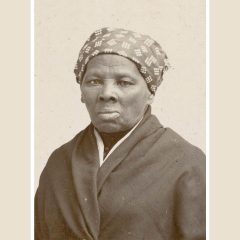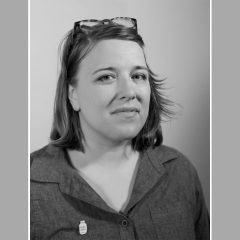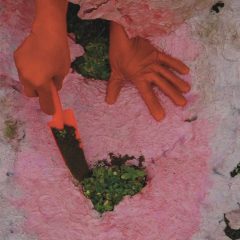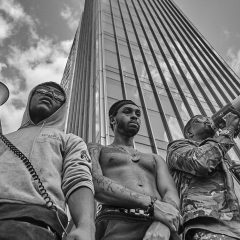[Andrea reviews divergent approaches to documenting artists’ processes and workspaces, finding that the second book is inappropriate for young artists, because it will give them unrealistic expectations. — the Artblog editors]
Sarah Trigg is an artist who became fascinated with the range of curiosities she found in fellow artists’ studios. Focusing on specific categories, which she terms “mascots,” “collected objects,” “makeshift tools,” “rituals,” “residue,” and “habitat,” Trigg set out to record her visits with 100 colleagues who represent the range of artists working in the U.S.
She described her approach as “anthropological”. Trigg knew only a handful of these colleagues before she began, and did the necessary research to select artists in proportion to geographic distribution and other demographic categories, such as age, gender, ethnicity, artistic medium, and level of renown. They include painters, sculptors, performance and video artists, some living in art centers, others somewhat isolated. Many will be familiar to readers, but others are discoveries. The author has done a remarkable job.
Reusing the “residue” of past projects
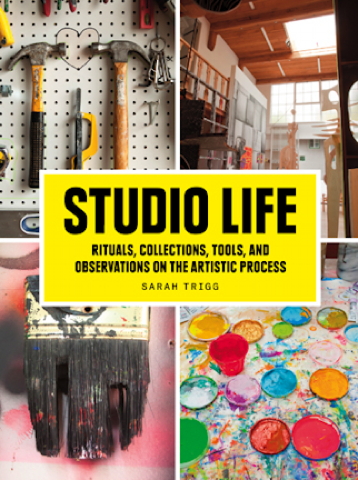
Trigg realized that the objects of her inquiries were often-unexamined aspects of each artist’s creative process, and she includes a one- or two-page discussion of the working approach of each artist and how the material she photographed fits in, based on conversations conducted during each studio visit.
Some of the objects, particularly the collections, serve as visual source material, as does “residue” from prior projects. The makeshift tools demonstrate that artists’ creativity pervades all aspects of their lives, as does the category of “habitat”–which Trigg defines as “situations involving the studio or aspects of it that will remain when the artist leaves.”
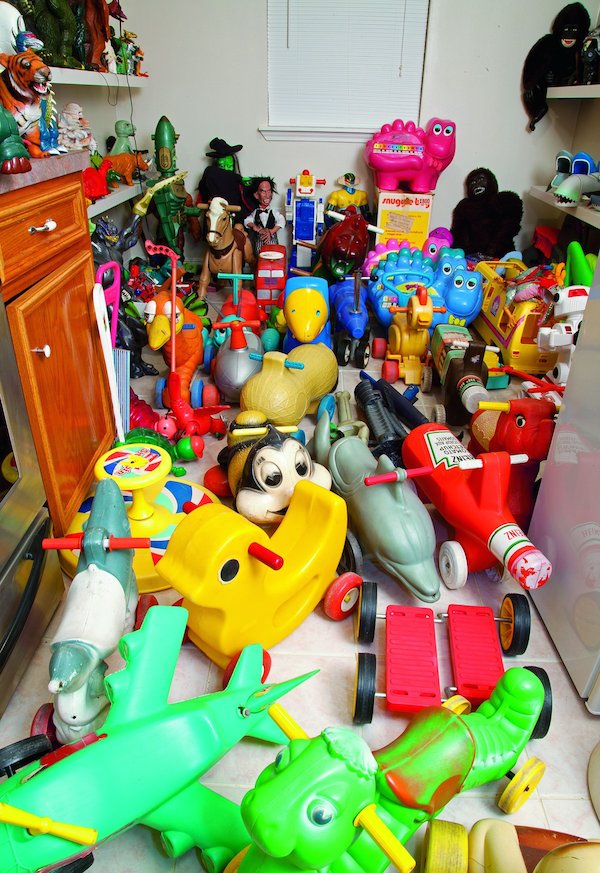
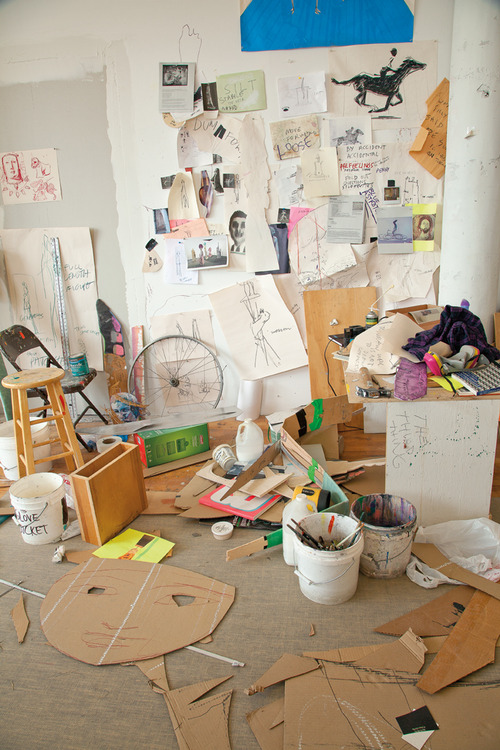
Tony Tasset keeps a dessicated jack-o-lantern in his Chicago studio. It was the model for a painted, bronze sculpture–“Rotting Pumpkin” (2006)–but remained in the studio beyond the rotting stage, and its mummified form is now barely recognizable. The artist says that it could be considered a mascot.
A large pile of detritus sits in Christina Lei Rodriguez’s Miami studio. She says of it, “Anything that is not working or that I’m fighting with after a few days goes back here, and I keep pulling from it and recycling material back into the work–destroying it to make something new.”
The New York studio of John Tremblay is filled with improvised tools: a knife whose presumably-broken handle he replaced with Vise-Grip pliers; stencils cut from old credit cards; a bottle opener made from a seatbelt clip; a plastic milk crate repurposed as a dispenser for a giant roll of tape, and several homemade stools to allow Tremblay to paint larger canvases than his normal reach allows. One of them, “slantstep 3,” [sic] is Tremblay’s homage to Bruce Nauman’s storied “Slant Step,” and has a base constructed from two slanted brackets.
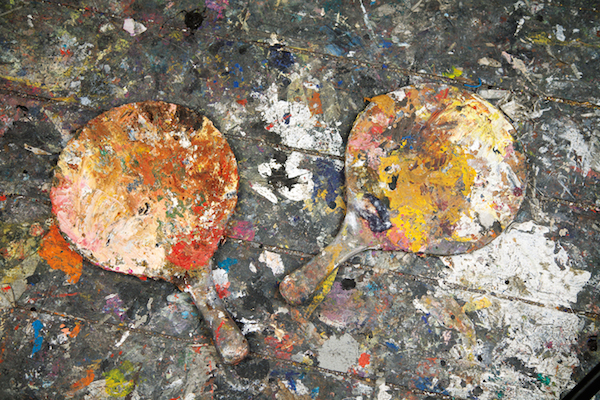
The studios are not shown in their entirety, and the artists themselves are rarely seen. What Trigg captures are details of working environments. Along with the accompanying essays, she offers intimate insight into the way a range of artists think and how they conduct their working lives. The book gives the impression of eavesdropping on conversations between artist friends. It will be of great interest to artists and to others looking for insight into the artistic process.
An index includes two or three sentences of biography for each artist, illustrates a single work, and lists a web address, when available.
Lush studio portraits
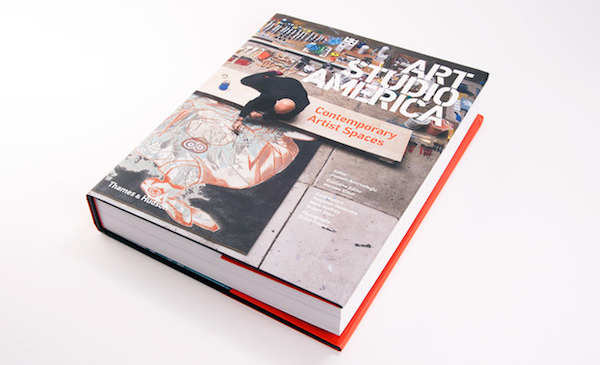
This lavishly illustrated, well-printed, 600-page tome was assembled by a British team who previously produced a book on British artists. Three introductory essays, by Benjamin Genocchio, Mark Godfrey, and Robert Storr make it clear that the book is primarily about artists, rather than their work environments. The 115, largely well-known artists cover a broad range in terms of medium and style; some of them were also visited by Sarah Trigg.
Their studios are uniformly well-appointed, photogenic, and very spacious–or shot so they appear that way. They do not resemble the many cramped, gritty, and makeshift studio spaces I have visited over the past 30 years. The interviews address the artists’ backgrounds, travels, and movements, often across national boundaries. Many of the artists are not Americans, but currently work in the U.S.: for example, Marina Abramovic, Charlene Von Heyl, Gabriel Orozco, and Cai Guo-Quiang.
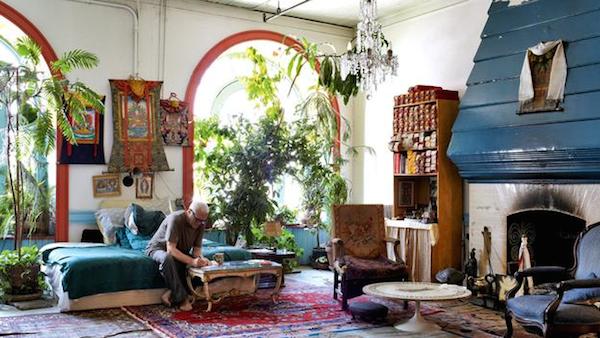
It reads in some ways like a travel journal, with an emphasis on location (New York, Chicago, L.A., and a handful of places off the beaten, urban path), and intermittent double-page spreads of pure landscape. Several pages are devoted to an interview with each artist, accompanied by photographs of studio assistants at work, multiple views of the studios and sometimes their exteriors, and full-page illustrations of each artist, often in the neighborhood beyond the studio. Geography and real estate are consistent sub-themes.
Lofty questions
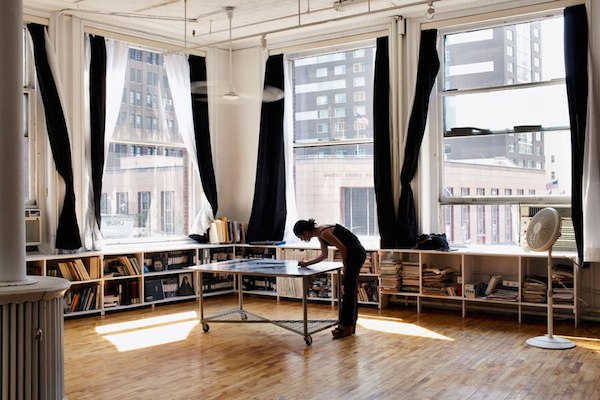
The interviewers come across as interested outsiders who have been reading about the American art world in newspapers and magazines, and are trying to understand both the physical and artistic landscape. Some of their questions are very broad: ”How does art affect culture?” “Where is art today?” “What would you, as an artist, do to change the face of America?”
Others are queries I doubt the artists ever posed themselves or each other: “Have your life experiences been transformative in terms of your career as an artist?” ‘What do you think makes an artist?” Occasionally the artists respond testily, and the interviewers are honest enough to record their reactions. When asked, “Is your practice studio-based?” Chris Burden responds, “I am not a doctor. I am not a dentist. I am an artist and I make sculptures.” The interview ends with the query, “But hasn’t contemporary art become part of the media and social circus?” to which Burden replies, “Isn’t that why you are publishing this book?”
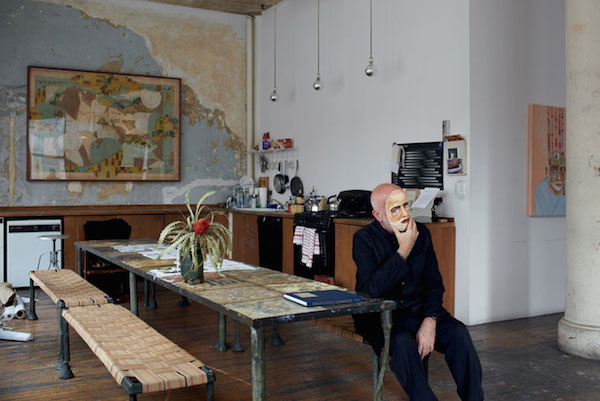
The heavily illustrated volume resembles a collection of spreads from a glossy Sunday newspaper supplement or lifestyle magazine. It will certainly interest readers who follow contemporary art but have rarely or never visited artists in their studios. I intend to give it as a birthday present to a good friend who is an art enthusiast. The fact that all the artists are, like the children of Lake Wobegon, all above-average, means she will likely have heard of them.
One of the most valuable things such informed readers are likely to learn is how prevalent assistants are, and that they not only do errands and prepare materials, but contribute significantly to the manual aspects of making the final work. This has been true throughout art history, but has been obscured by romantic images of the lone, unappreciated artist, working in isolation.
I do not recommend the book to art students or young artists. For them, it will read as studio porn, giving them entirely unrealistic, wet dreams of things to come.



